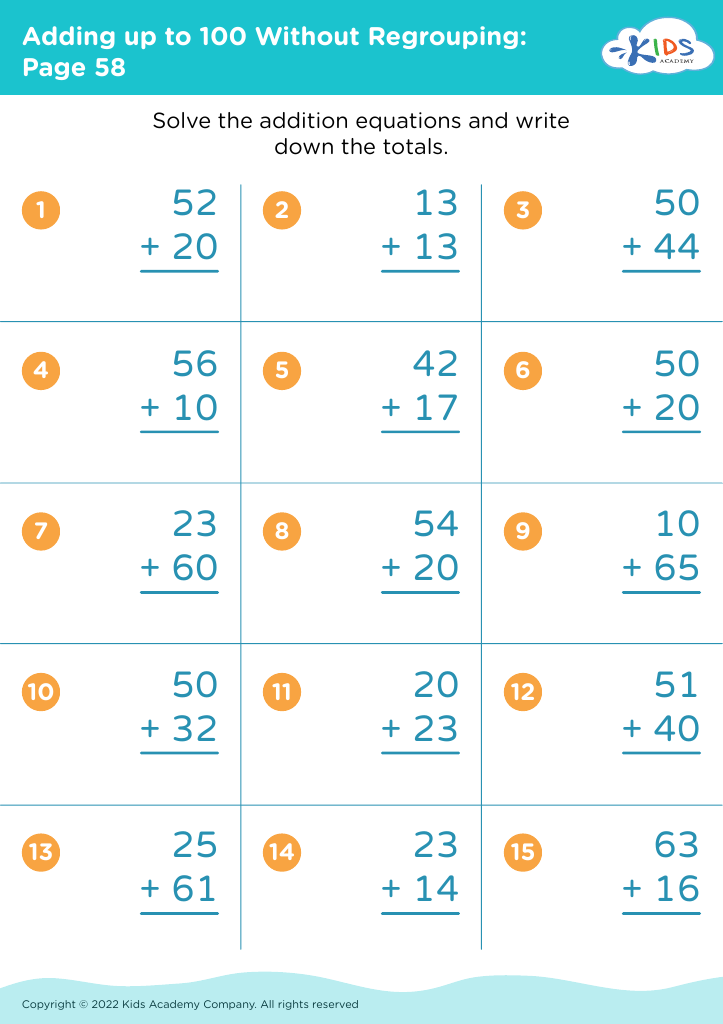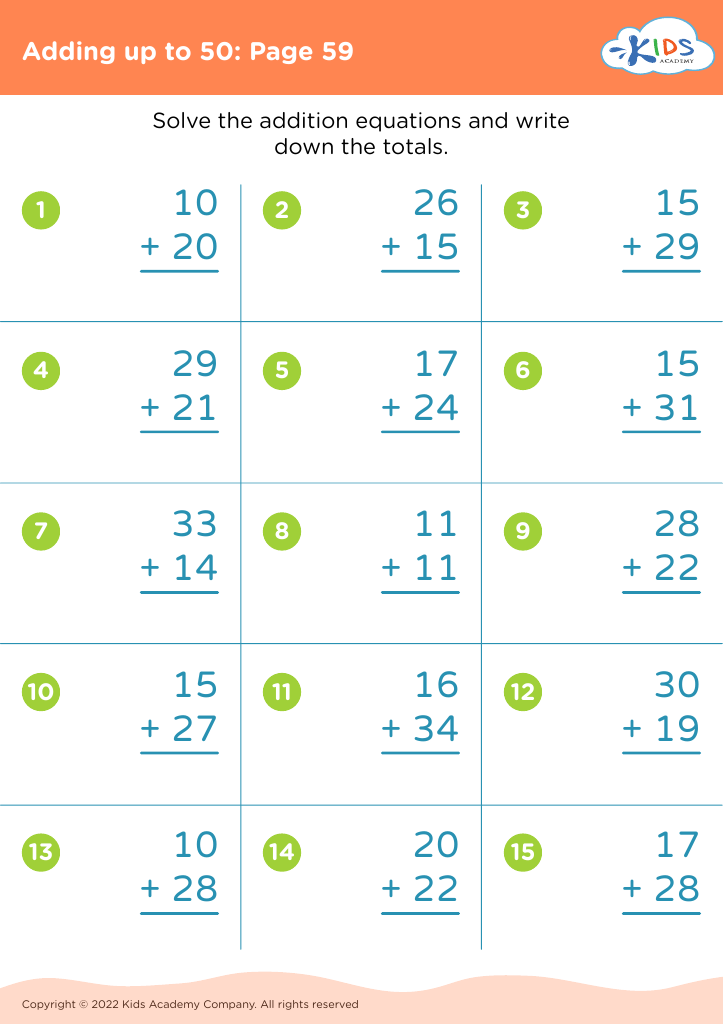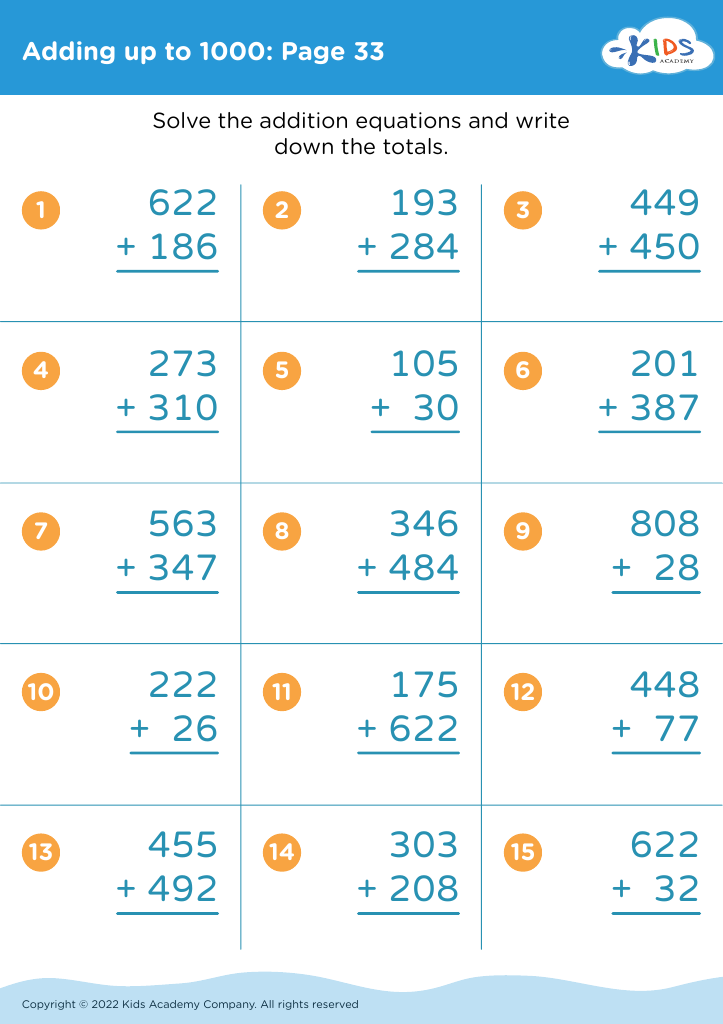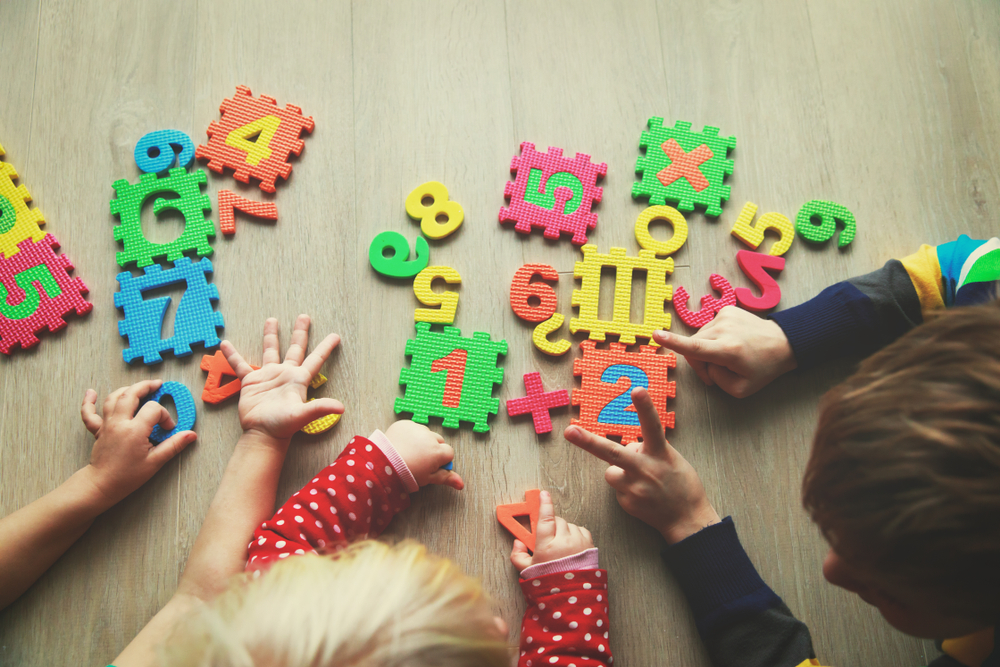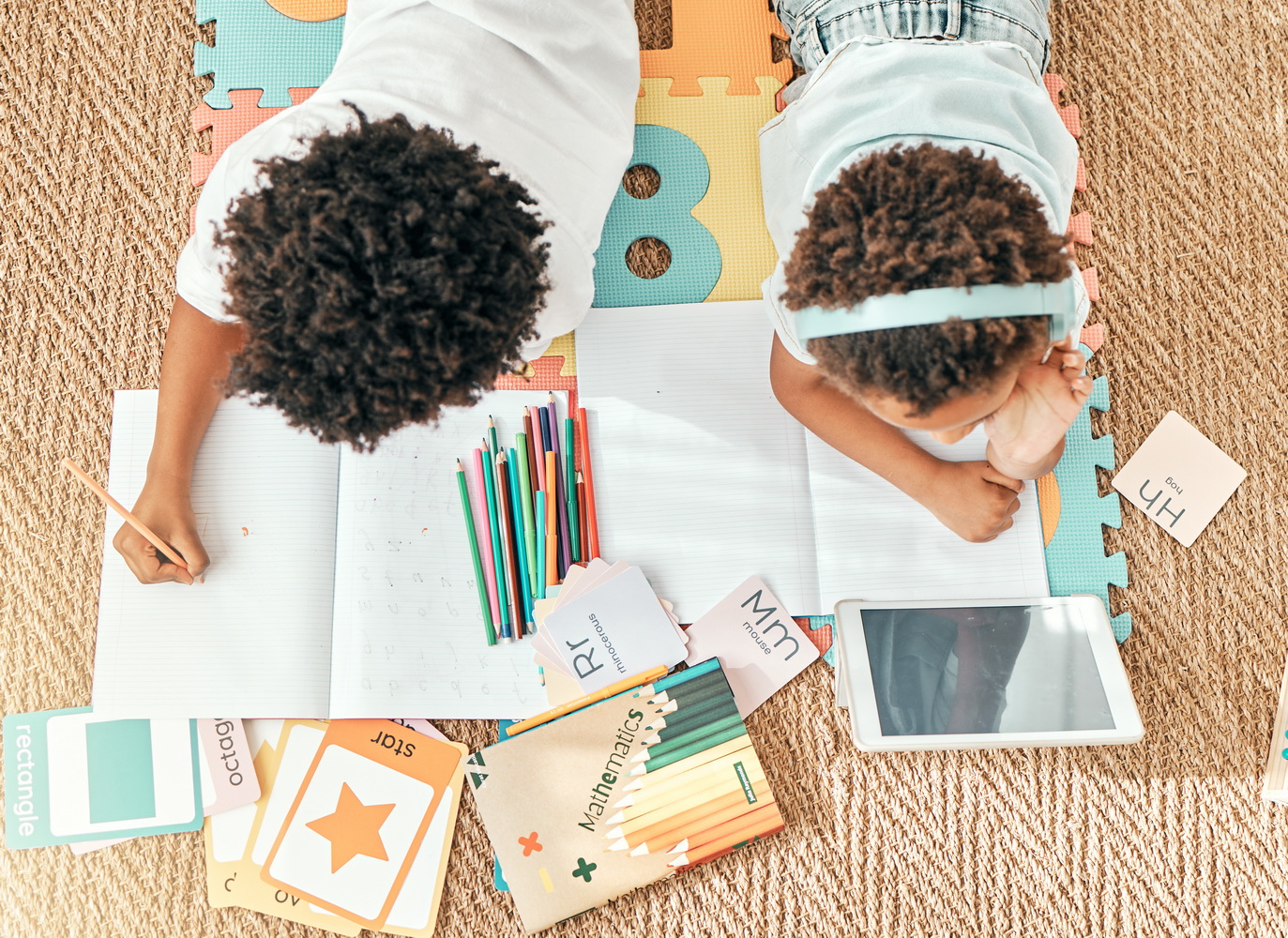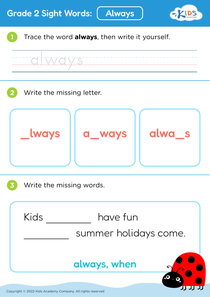Understanding sequence Grade 2 Addition Worksheets
4 filtered results
-
From - To
Welcome to our "Understanding Sequence Grade 2 Addition Worksheets" page! Here, you'll find a collection of engaging and educational worksheets designed to help young learners grasp the foundational concept of addition through sequencing. These worksheets encourage students to recognize the order of numbers, enhancing their problem-solving skills and number sense. Each activity is crafted to be interactive and age-appropriate, allowing children to practice addition in a fun way. Teachers and parents can easily incorporate these resources into lesson plans, making math exciting and accessible for second graders. Join us in supporting your child's mathematical journey today!
Understanding sequences in Grade 2 addition is pivotal for several reasons that underscore both academic and cognitive development. First, sequence comprehension fosters a foundational skill in mathematics, enabling students to recognize patterns in numbers, which is essential for future arithmetic operations. When children grasp how numbers grow through addition, they develop a confidence that can translate into a love for learning math.
Moreover, recognizing sequences can enhance problem-solving skills, allowing students to approach math problems systematically. It encourages logical thinking as they learn to predict outcomes and understand mathematical relationships, skills that extend to other subjects and real-life scenarios.
For parents and teachers, attending to developing an understanding of sequences enhances their child's academic trajectory. Early mastery can lead to higher achievements in later grades, reducing anxiety linked to more complex concepts. Furthermore, teaching students to visualize and articulate their thought processes strengthens communication skills.
In summary, caring about an understanding of sequences in Grade 2 addition builds a strong mathematical framework, develops critical thinking, and nurtures a positive attitude towards learning—all characteristics essential for success both in school and beyond.
